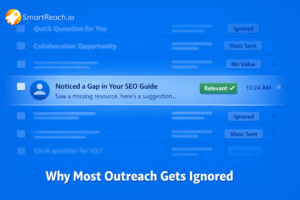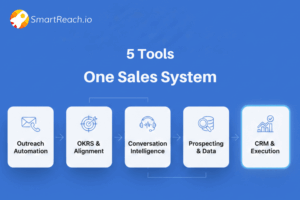How can I choose reputable domains for links in my emails?
Domain reputation directly impacts cold email success, yet 73% of sales teams overlook this critical factor when crafting outreach campaigns.
After writing a perfect email, if you’re linking to questionable domains, your emails still land in spam folders.
In this blog, we are going to discuss how you can choose reputable domain for your cold emails.
Why does domain reputation matter?
Every cold email is scanned by providers like Gmail and Outlook. They evaluate the reputation of every link, and if you’re referencing flagged domains, your email is headed straight for spam.
The impact is immediate:
- Inbox rates drop: Teams linking to poor domains often see deliverability plunge from 85% to 60%, costing a 10-person team up to 1,250 lost connections/month.
- Sender reputation tanks: Email platforms start distrusting your domain, affecting future sends.
- Fewer replies: Even delivered emails look shady when they contain sketchy links.
One of our customers improved deliverability from 60% to 85% just by switching to reputable domains, resulting in a 40% boost in qualified conversations within weeks.
Cold outreach faces strict filtering by default. That’s why link reputation isn’t optional, it’s mission-critical.
SmartReach.io’s Global Blacklist Monitoring helps you stay ahead by automatically flagging risky domains before they hurt your sender reputation, keeping your outreach clean, compliant, and inbox-ready.
Red flags to watch before linking a domain in emails
Linking to the wrong domain can tank your deliverability and hurt your sender reputation. Avoid domains with these red flags:
- Newly registered: Domains under 6 months old often trigger spam filters.
- No SSL certificate: “Not Secure” = not credible.
- Unknown URL shorteners: Stick to trusted ones like bit.ly—others may hide malicious links.
- Poor website quality: Pop-ups, broken links, or outdated design signal spam.
- Suspicious extensions: Domains ending in .tk, .ml, .ga are high-risk.
- Affiliate-heavy content: Sites focused solely on promotions often get flagged.
Quick gut-check:
If you wouldn’t confidently send that link to a C-level exec at a Fortune 500 company, it has no place in your outreach.

How to choose reputable domains for your email links
The links you include in your emails can directly impact email deliverability.
If your email contains a link to a suspicious or low-quality domain, email spam filters will block or flag your emails, even if the content itself is clean.
That’s why it’s essential to evaluate each domain before including it in your outreach.
Here’s how to choose domains that build trust and improve your chances of landing in the inbox:
#1 Prioritize domain age
Newly registered domains are often used for spam or phishing campaigns. Email providers are cautious about domains that have been active for only a few weeks or months.
Best practice:
- Choose domains that are at least 6 months old
- Prefer domains older than 2 years for higher credibility
- Use tools like whois.net to check registration age
#2 Check for SSL certificate (HTTPS)
Domains without SSL certificates (those that load with “http://” instead of “https://”) are flagged as unsecured. This can instantly reduce trust signals for your email.
How to verify:
- Look for the padlock icon in the browser’s address bar
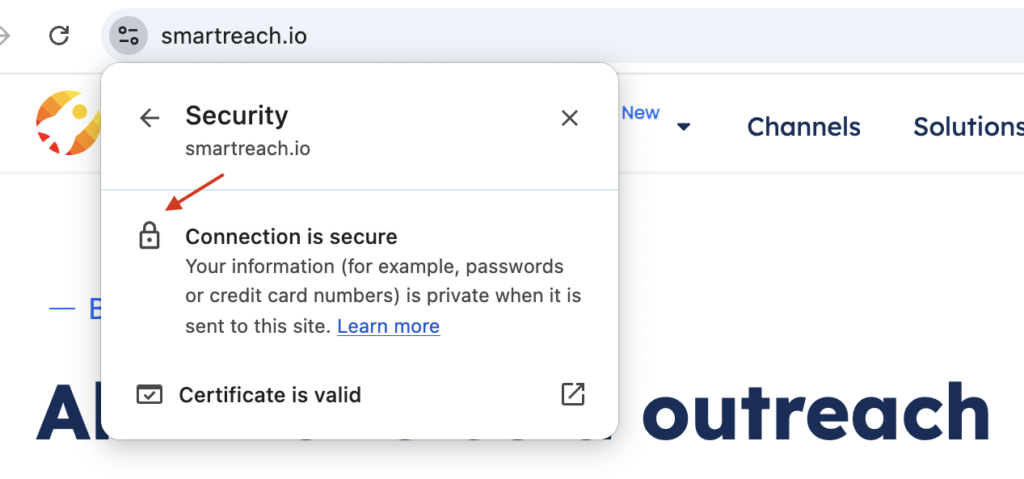
- Make sure the URL starts with “https://”
#3 Review domain authority (DA or DR)
Domain Authority (by Moz) or Domain Rating (by Ahrefs) measures the trustworthiness of a domain based on its link profile.
While not an email-specific metric, it’s a strong indicator of a domain’s online credibility.
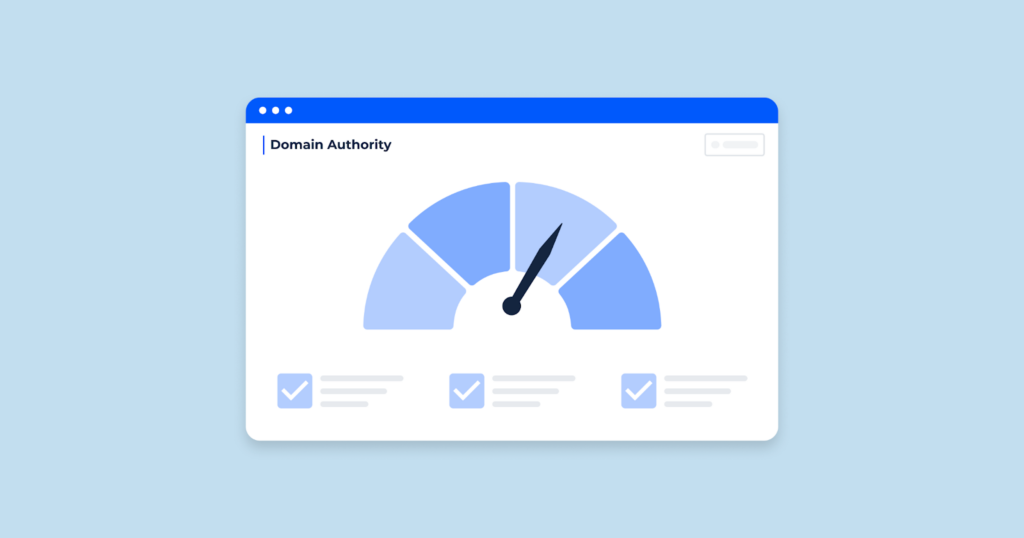
Benchmarks to follow:
#4 Evaluate the website’s quality
Professional websites signal legitimacy. That’s why it’s important to pick the right domain name linked to a credible, well-maintained site; low-quality, ad-heavy, or poorly designed websites often indicate spam or abandoned domains.
What to check:
- Clean and modern design
- Fast loading speed
- Mobile responsiveness
- No excessive popups or redirects
#5 Look for a real business presence
Legitimate businesses go beyond just having a website. They offer clear contact details and are active across multiple channels.
Look for:
- Verified phone numbers and physical addresses
- Professional team or “About” pages
- Active social media accounts
- Customer testimonials or case studies
#6 Run security checks
Before linking to a domain, make sure it hasn’t been flagged for malware, phishing, or spam activity.
Free tools to use:
- VirusTotal
- URLVoid
- Google Safe Browsing Transparency Report
#7 Focus on relevance
Always link to content that aligns with your email topic. Spam filters (and recipients) are more likely to trust links that are contextually relevant.
Ideal sources include:
- Reputable business blogs
- Industry-specific publications
- Trusted B2B tools or product pages
- Educational (.edu) or government (.gov) websites
- Well-known platforms like LinkedIn, Crunchbase, etc.
#8 Test before you send
Once your email is ready, send it through a spam-checking tool to spot any potential link-related issues.
Recommended tools:
Pro tip: Create a scoring system for domain safety
You can use this quick scoring system to evaluate a domain before adding it to your email:
| Criteria | Score |
| Domain age ≥ 6 months | 1 |
| SSL certificate is active | 1 |
| Domain Authority ≥ 20 | 1 |
| No security flags in databases | 1 |
| Website design is clean & modern | 1 |
| Business info is clearly listed | 1 |
| Active social or online presence | 1 |
- 7 points = Safe to use
- 4–6 points = Use caution
- Below 4 points = Avoid
By carefully selecting the domains you link to, you will not just be protecting your sender reputation, you’re also signaling professionalism to your prospects and avoiding sending emails to spam
Why do links to certain domains make my emails go to spam?
Email providers use sophisticated machine learning algorithms to evaluate every aspect of your message instantaneously, including the reputation history of domains you reference. When algorithms detect links to domains with poor reputations, they automatically categorize your email as potentially harmful.
The filtering process examines multiple domain characteristics simultaneously: historical spam reports, user complaint rates, security violations, and association with known malicious activity.
Domains flagged in any of these categories immediately trigger email filtering, regardless of your message content quality.
This automated evaluation happens in milliseconds, with no human review or appeal process. Your carefully crafted outreach message gets filtered before recipients ever have the opportunity to evaluate its value.
Read more in detail on why certain links make email land in spam.
Conclusion
Your choice of domains directly influences how your emails perform, not just in terms of deliverability, but in how your brand is perceived.
Optimizing domain reputation isn’t just a technical checkbox; it’s a strategic move that builds trust with both inbox providers and potential buyers.
When you link to credible, industry-relevant domains and implement a consistent verification process, you’re actively safeguarding your outreach pipeline and laying the groundwork for long-term sales success.
Start by curating a trusted domain whitelist, educate your team on safe linking practices, and treat every outbound link as a reflection of your brand’s professionalism.
With SmartReach’s Global Blacklist Monitoring feature, you can take it a step further like automatically detecting and avoiding domains that could jeopardize your deliverability.
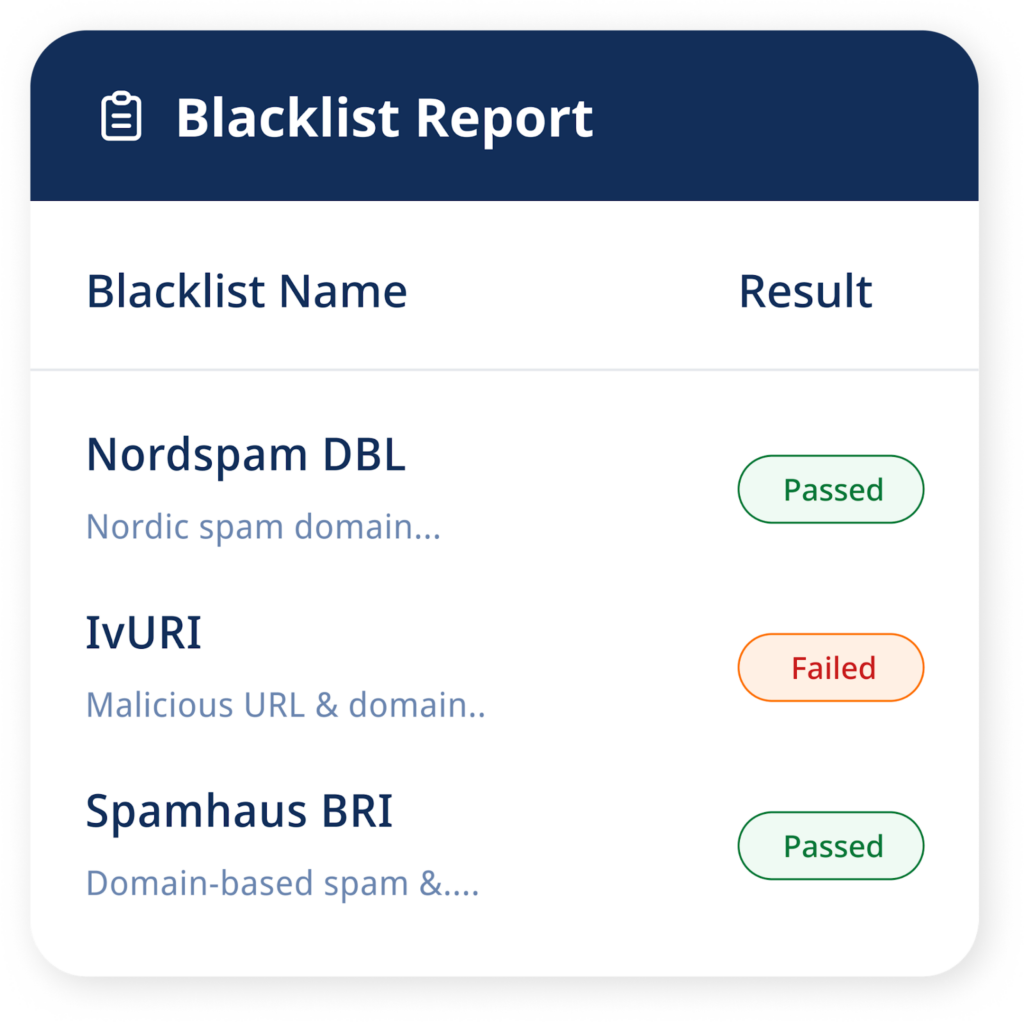
It’s like a safety net for your sender reputation, working in the background to keep your outreach clean and compliant.
Choose smart. Link smart. Sell smarter.
Try SmartReach.io free for 14 days
FAQ on choosing a reputable domain for links in my email
How to choose an effective domain name?
Choose a domain name that is short, memorable, easy to spell, and reflects your brand. Avoid numbers, hyphens, and complex words. Stick to a .com extension if possible for global credibility.
What is a good domain for email?
A good domain for email should be custom, brand-aligned, and professionally managed. It should have proper DNS setup (SPF, DKIM, DMARC), SSL certificate, and a clean reputation across blacklists.
What is a valid email domain name?
A valid email domain is one that follows standard format rules (e.g., [email protected]), has active DNS records, and is capable of sending and receiving emails without being flagged as spam.
How to get a unique email domain?
Register a custom domain through providers like GoDaddy, Namecheap, or Google Domains. Choose a name that reflects your business and isn’t already in use. Verify its availability and set up email hosting.
What is a reputable domain name?
A reputable domain has an established online presence, a clean security history, active SSL certificate, and domain authority of 20+ or higher. It’s often associated with professional websites or recognized brands.
How to find if a domain name is good?
Check the domain’s age, authority score (DA/DR), blacklist status, and SSL configuration. Use tools like Whois, Moz, and VirusTotal to assess its credibility and security.
Which is the safest email domain?
Domains ending in .gov, .edu, or well-known providers like gmail.com, outlook.com, or enterprise-owned custom domains with verified DNS records are considered safest for email use.
What are the rules for email domain names?
Email domain names must include only letters, numbers, and hyphens, no special characters or spaces. They must end with a valid TLD (like .com, .org) and be linked to an active mail server for sending/receiving emails.


